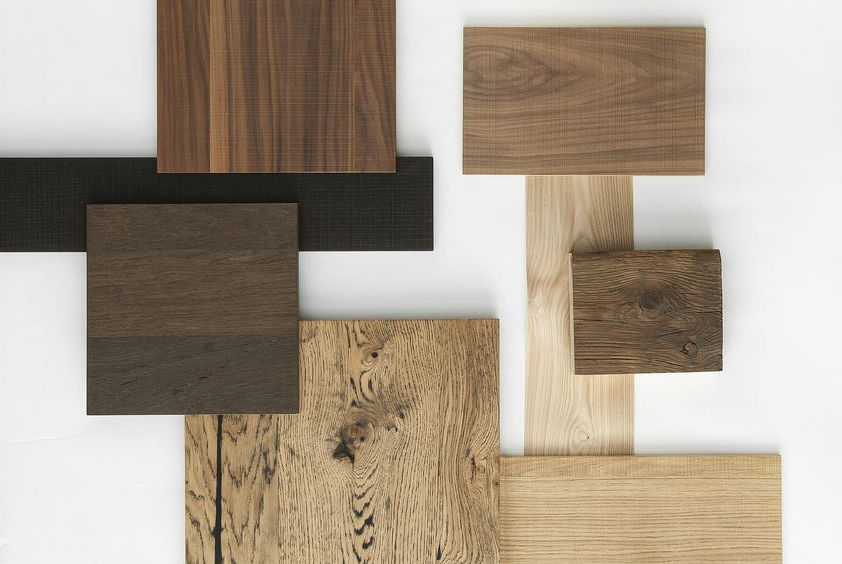Mixing wood tones in interior design can transform a space from ordinary to extraordinary. Whether you're redecorating a single room or revamping an entire home, understanding the nuances of combining different wood finishes can create a cohesive, stylish, and inviting environment.
In this blog post, we'll delve into the art of mixing wood tones, offering practical tips and inspiring ideas to help you master this timeless design technique.
Why Mix Wood Tones?
Mixing wood tones brings depth, texture, and visual interest to a space. It prevents the room from looking flat and one-dimensional, adding layers of sophistication and warmth. By skillfully combining various wood finishes, you can create a balanced and harmonious interior that feels both dynamic and comfortable.
Key Principles of Mixing Wood Tones
Establish a Dominant Wood Tone: Choose a primary wood tone that will serve as the foundation of your design. This could be the wood used in your flooring, large furniture pieces, or cabinetry. The dominant wood sets the stage for the other wood tones to complement.
Consider Undertones: Pay attention to the undertones of the wood. Wood can have warm (red, orange, yellow) or cool (gray, blue) undertones. Mixing woods with similar undertones can create a cohesive look, while contrasting undertones can add an element of surprise and interest.
Balance and Proportion: Aim for a balanced mix by using different wood tones in varying proportions. Avoid overwhelming the space with too many competing finishes. Instead, create a hierarchy where one or two wood tones take the lead, and the others play supporting roles.
Use Transition Pieces: Incorporate pieces that bridge the gap between different wood tones. Items like rugs, upholstery, and accessories can soften the transitions and make the mix more visually appealing.
Texture Matters: Combining different textures can enhance the mix of wood tones. Pair smooth, polished woods with rough, rustic finishes to create a rich, tactile experience.
Tips for Successfully Mixing Wood Tones
Start with the Floor: Flooring is often the largest wooden surface in a room. Use it as a starting point to determine the other wood tones you’ll introduce. If you have dark hardwood floors, consider lighter wood furniture to create contrast.
Vary the Grain Patterns: Different wood species have unique grain patterns. Mixing these can add an interesting visual texture to your space. Pairing fine-grained woods with more pronounced grains can create a balanced look.
Use a Unifying Element: Find a unifying element to tie the different wood tones together. This could be a color, finish, or even a design style. For example, a mid-century modern aesthetic can harmonize different wood tones through its cohesive design language.
Incorporate Natural Light: Natural light can enhance the beauty of mixed wood tones by highlighting their unique characteristics. Make sure your space is well-lit to fully appreciate the depth and richness of the wood finishes.
Experiment with Accent Pieces: Don’t be afraid to experiment with smaller accent pieces. A wooden tray, picture frame, or side table can introduce a new wood tone without overwhelming the space. These pieces can easily be swapped out if you decide to change up the look.
Common Pitfalls to Avoid
Overdoing It: Too many different wood tones can create a chaotic and disjointed look. Stick to a few complementary finishes to maintain harmony.
Ignoring Scale and Proportion: Ensure that the size and scale of the wooden elements are proportionate to the space. Oversized pieces can dominate a room, while undersized items might get lost.
Clashing Undertones: Mixing woods with clashing undertones can result in an unsettling and jarring effect. Strive for undertones that either complement or deliberately contrast in a balanced way.
Inspirational Ideas for Mixing Wood Tones
Rustic Chic: Combine reclaimed wood furniture with polished hardwood floors. Use a neutral color palette to let the wood tones take center stage.
Modern Eclectic: Mix sleek, dark wood furniture with light, natural wood accents. Incorporate metallic elements for a contemporary twist.
Scandinavian Simplicity: Pair light, blonde woods with subtle dark wood accents. Use white walls and minimalistic decor to create a clean, airy feel.
Traditional Elegance: Blend rich, dark mahogany with medium-toned cherry wood. Add luxurious textiles and classic accessories to enhance the sophisticated ambiance.

Transform Your Space with Satya Makers Interior Design Studio
At Satya Makers Interior Design Studio, we understand the transformative power of well-designed spaces. Our expert designers specialize in blending wood tones to create interiors that are both beautiful and functional. Whether you’re looking to update a single room or redesign your entire home, we offer personalized design solutions tailored to your unique style and needs.
Our approach combines meticulous attention to detail with a deep understanding of design principles, ensuring that your space reflects your personality while maintaining a cohesive aesthetic. Let us help you bring your vision to life with our bespoke interior design services.
Contact Satya Makers Interior Design Studio today to schedule a consultation and start your journey towards a stunning, harmonious home.
Instagram Link - Satya Makers Interior Design Studio
By mastering the art of mixing wood tones, you can create a visually engaging and balanced interior that feels both timeless and modern. Remember, the key lies in balance, proportion, and a keen eye for detail. Happy decorating!





Comments